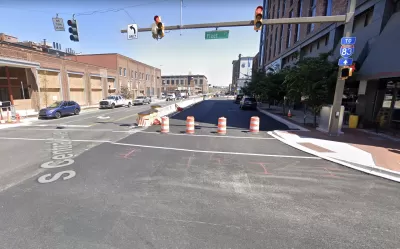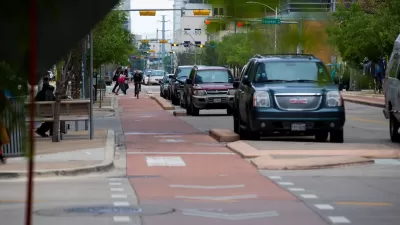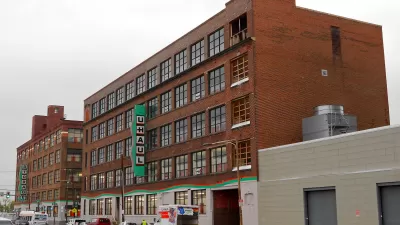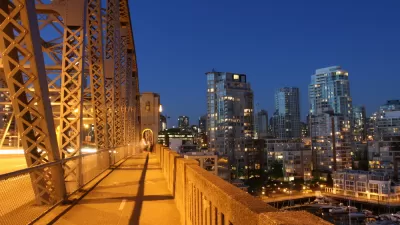Residents and business operators say they weren’t warned about a road diet planned for a major thoroughfare in Baltimore. Planners and advocates say the changes have been a long time coming.

“Work is wrapping up on a $55 million, yearslong upgrade of a major downtown roadway serving Baltimore’s developing waterfront neighborhoods,” reports Lorraine Mirabella in a paywalled article for the Baltimore Sun. “But the revitalization of Central Avenue’s streetscape has surprised some business operators and residents.”
Based on the article’s telling of the story, some local businesses and residents were expecting the project to add vehicle capacity—instead the project is eliminating a vehicle lane in each direction and adding a protected bicycle path. Doug Schmidt, a principal with Workshop Development, is quoted in the article saying the “road diet” was never made public.
“Opponents fear the rebuilt road won’t handle current traffic or heavier use as workers return to offices and as new apartments, offices, hotels and stores open in the corridor. They worry about safety, loss of parking, disruption to businesses that rely on loading areas and increased congestion on neighborhood streets,” writes Mirabella.
Proponents, including bike and complete streets advocates, support the changes. The article notes that the political conflict is indicative of similar struggles in other cities—where increasing awareness of traffic safety and climate change is butting heads with the car-centric planning status quo.
The article documents the planning process that produced the road diet for Central Avenue. The process dates back to 2015, with more direct changes implemented by the city’s adoption of a complete streets ordinance in 2018 and public outreach in November 2021.
FULL STORY: Controversy emerges over changes to Baltimore’s Central Avenue streetscape as it nears completion

Trump Administration Could Effectively End Housing Voucher Program
Federal officials are eyeing major cuts to the Section 8 program that helps millions of low-income households pay rent.

Planetizen Federal Action Tracker
A weekly monitor of how Trump’s orders and actions are impacting planners and planning in America.

Ken Jennings Launches Transit Web Series
The Jeopardy champ wants you to ride public transit.

Crime Continues to Drop on Philly, San Francisco Transit Systems
SEPTA and BART both saw significant declines in violent crime in the first quarter of 2025.

How South LA Green Spaces Power Community Health and Hope
Green spaces like South L.A. Wetlands Park are helping South Los Angeles residents promote healthy lifestyles, build community, and advocate for improvements that reflect local needs in historically underserved neighborhoods.

Sacramento Plans ‘Quick-Build’ Road Safety Projects
The city wants to accelerate small-scale safety improvements that use low-cost equipment to make an impact at dangerous intersections.
Urban Design for Planners 1: Software Tools
This six-course series explores essential urban design concepts using open source software and equips planners with the tools they need to participate fully in the urban design process.
Planning for Universal Design
Learn the tools for implementing Universal Design in planning regulations.
Heyer Gruel & Associates PA
Ada County Highway District
Institute for Housing and Urban Development Studies (IHS)
City of Grandview
Harvard GSD Executive Education
Toledo-Lucas County Plan Commissions
Salt Lake City
NYU Wagner Graduate School of Public Service





























